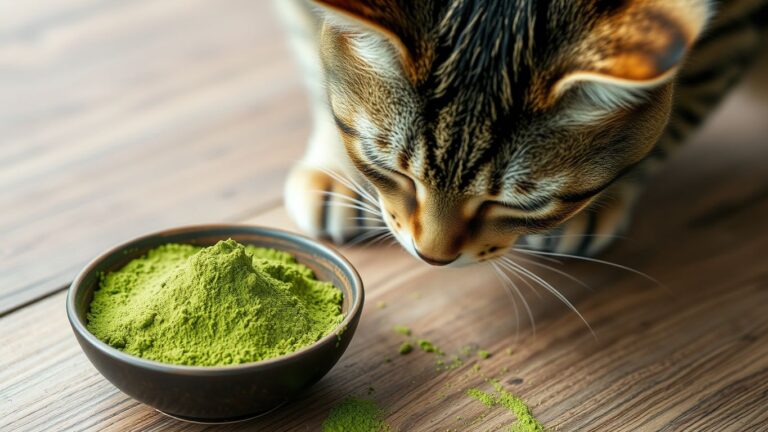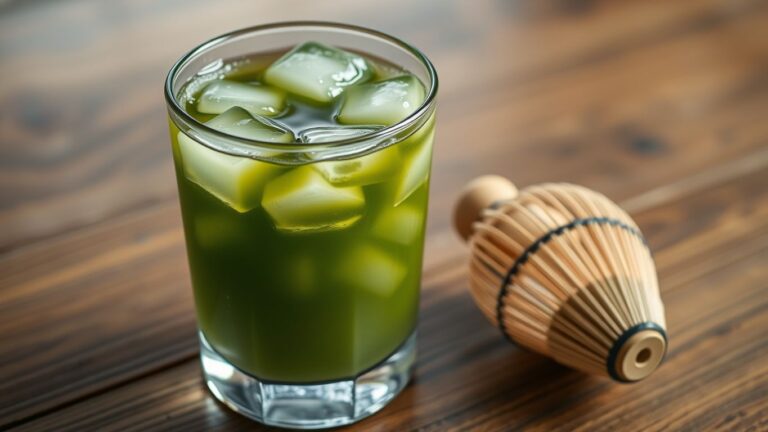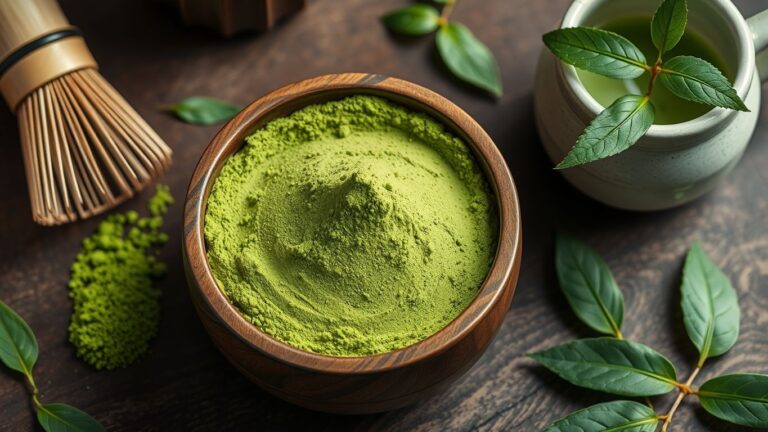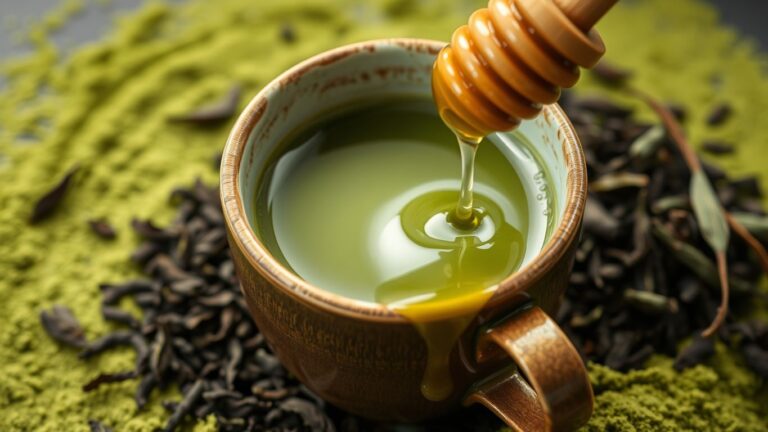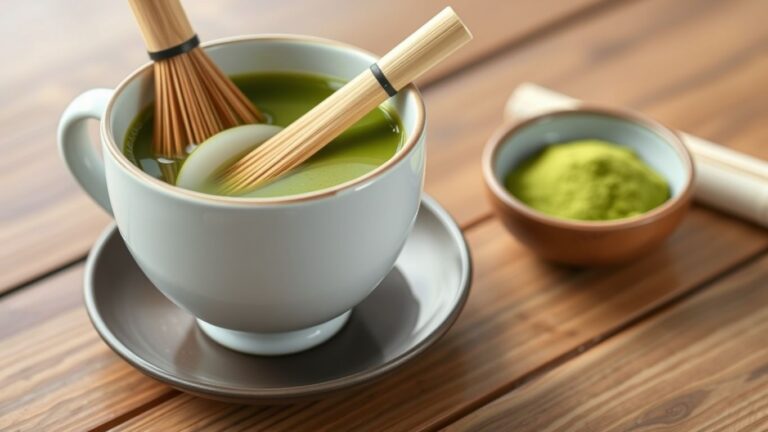Making matcha traditionally involves using a bamboo whisk, known as a chasen, to mix the fine green tea powder with water, creating a smooth and frothy beverage. However, if you don’t have a whisk, don’t worry! There are several easy and effective methods to prepare matcha using common kitchen tools and appliances. This article will guide you through various alternatives to make delicious matcha without a whisk.
Key Takeaways
- A bamboo whisk is the traditional tool for preparing matcha, but it’s not the only option.
- You can use a mason jar to shake the matcha and water together, creating a smooth drink.
- Blenders and immersion blenders are excellent for mixing matcha and achieving a frothy texture.
- Electric milk frothers can also be used to blend matcha powder with water efficiently.
- Each method has its own pros and cons, so you can choose the one that best fits your needs and preferences.
Understanding the Importance of Whisking Matcha
Why Matcha Needs to Be Whisked
Whisking matcha is crucial for a few reasons. First, it helps to evenly distribute the matcha powder in the water, ensuring a smooth and consistent texture without clumps. Matcha will naturally form clumps if not properly whisked. Secondly, whisking aerates the matcha, creating a frothy layer on top which enhances the drinking experience both visually and texturally. Finally, whisking can help to dissolve the matcha powder more effectively, allowing its flavors to fully infuse into the water for a more balanced taste.
The Role of a Traditional Bamboo Whisk
A traditional bamboo whisk, or chasen, is specially designed for making matcha. It has many more prongs than an ordinary baking whisk, allowing it to break up clumps and create a frothy matcha in seconds. The gentle bamboo prongs also mold to the shape of your bowl without scratching it. This means no matcha getting stuck to the bowl’s sides and no grainy matcha. The chasen is an essential tool in Japanese tea ceremonies, bringing out the most delicate flavors and aroma of the matcha.
Common Issues Without Proper Whisking
Without proper whisking, you might encounter several issues. The most common problem is clumpy matcha, which can ruin the texture and taste of your drink. Additionally, without aeration, the matcha may lack the frothy layer that enhances the overall experience. Finally, improperly whisked matcha may not fully dissolve, leading to an uneven flavor profile. Using a spoon is really not ideal as it often makes even more clumps.
Using a Mason Jar for Matcha Preparation

Step-by-Step Guide to the Mason Jar Method
Making matcha with a mason jar is simple and effective. Follow these steps:
- Add matcha powder: Place 1-2 teaspoons of matcha powder into the mason jar.
- Pour in water: Add a small amount of hot (but not boiling) water to the jar.
- Seal the jar: Tighten the lid securely to avoid spills.
- Shake vigorously: Shake the jar for about 30 seconds until the matcha is well mixed and frothy.
- Serve: Pour the matcha into a cup and enjoy!
Pros and Cons of Using a Mason Jar
Pros:
- Easy to use and clean.
- No special equipment needed.
- Great for making iced matcha.
Cons:
- Can be tricky to open due to pressure buildup.
- Not ideal for large batches.
Tips for Best Results
- Sift the matcha: Sifting the matcha powder before adding it to the jar helps prevent clumps.
- Use warm water: Warm water helps the matcha dissolve better than cold water.
- Shake well: Shake vigorously to ensure a smooth, frothy matcha.
For an iced raspberry matcha latte, mix together raspberry jam and coconut or almond milk in the mason jar. Shake vigorously for about a minute to mix well.
Using a mason jar is a convenient and effective way to prepare matcha, especially if you don’t have a traditional whisk. Just remember to be careful when opening the jar after shaking, as pressure can build up inside.
Blending Matcha with a Blender
How to Use a Blender for Matcha
Using a blender to make matcha is a quick and easy method. Start by adding 1 teaspoon of matcha powder and 1/4 cup of hot water (not boiling, around 175°F) into the blender. Blend on low speed for 15-20 seconds to dissolve the matcha powder. Then, increase the speed to high and blend for an additional 30 seconds to create froth and ensure thorough mixing. Once the matcha is well blended and frothy, carefully pour it into a cup.
Advantages of the Blender Method
- Speedy and efficient: Blending matcha in a blender is quick and efficient, making it a great option for busy mornings.
- Smooth and frothy: This method creates a smooth and frothy matcha tea easily without a bamboo whisk.
- Versatile: You can experiment with different ingredients, such as adding sweeteners or ice for a refreshing twist.
Common Mistakes to Avoid
- Using boiling water: Always use hot water that is around 175°F to avoid burning the matcha powder.
- Overfilling the blender: Make sure not to overfill the blender to prevent spills and ensure proper mixing.
- Not blending long enough: Blend long enough to dissolve the matcha powder completely and create a frothy texture.
Blending matcha in a blender is a convenient and effective way to prepare matcha without traditional utensils. It’s perfect for those who love matcha lattes and want a quick and easy method to make them at home.
Creating Matcha with an Electric Milk Frother
Step-by-Step Instructions for Milk Frother Method
If you love lattes, there’s a good chance you have an electric milk frother. This tool works great as a matcha whisk alternative! Here’s how to use it:
- Add your matcha and hot water to a cup or bowl.
- Insert the milk frother, ensuring it’s fully submerged in the liquid.
- Turn on the handheld frother and whisk the matcha mixture for about 15-20 seconds, moving the frother around to ensure even mixing.
- Move the frother up and down and side to side to make sure everything is well mixed.
Benefits of Using a Milk Frother
Using an electric milk frother is a perfect budget-friendly matcha latte solution. Here are some benefits:
- Quick and easy to use
- Creates a creamy, frothy texture
- Portable and convenient for travel
- Easy to clean
Troubleshooting Common Issues
While using a milk frother is straightforward, you might encounter some issues. Here are some tips to help you out:
- Clumps in Matcha: If your matcha is clumpy, try sifting it before adding water.
- Too Much Foam: If there’s too much foam, reduce the frothing time.
- Splashing: To avoid splashing, make sure the frother is fully submerged before turning it on and turn it off before removing it from the liquid.
Remember, the key to a smooth matcha is ensuring the frother is fully submerged and moving it around to mix evenly.
Making Matcha with an Immersion Blender

Detailed Guide to Immersion Blender Method
Got an immersion or handheld blender? You can make a perfect cup of matcha with it! Start by adding the matcha green tea powder into a cup or bowl. Pour hot water into the cup and insert the immersion blender, making sure the blades are fully submerged in the liquid. Turn on the immersion blender and blend the matcha mixture on low speed initially to dissolve the matcha powder. Once dissolved, increase the speed to high and continue blending for 30 seconds to create froth.
Pros and Cons of Immersion Blenders
Pros:
- Quick and easy to use
- Creates a smooth and frothy matcha
- No need for special matcha tools
Cons:
- Can be messy if not careful
- Requires an electric outlet
- Not as portable as other methods
Achieving the Perfect Froth
To get the best froth, make sure the immersion blender is fully submerged in the liquid. Start blending on low speed to dissolve the matcha powder, then increase to high speed for a frothy finish. If you want to make a strawberry matcha latte, you can use the immersion blender to mix fresh strawberries and homemade strawberry syrup with the matcha for a delicious twist.
Shaking Matcha in a Shaker Bottle
How to Prepare Matcha in a Shaker Bottle
Preparing matcha in a shaker bottle is a quick and easy method, perfect for those on the go. Here’s how you can do it:
- Add 1 tsp (2 grams) of matcha powder to your shaker bottle.
- Pour in about 8 ounces of cold or hot water. Be cautious with hot water as it can create pressure inside the bottle.
- Secure the lid tightly to avoid any spills.
- Shake vigorously for 20-30 seconds until the matcha is well mixed and frothy.
This method is not only convenient but also ensures you get a smooth matcha drink without any clumps.
Best Practices for Smooth Matcha
To achieve the best results, consider these tips:
- Sift your matcha powder before adding it to the shaker bottle to prevent clumping.
- Use a shaker bottle with a shaker ball or add a few ice cubes to help break up the matcha powder more effectively.
- Shake the bottle in a circular motion to ensure even mixing.
Comparing Shaker Bottles and Mason Jars
While both shaker bottles and mason jars can be used to prepare matcha, there are some differences:
| Feature | Shaker Bottle | Mason Jar |
|---|---|---|
| Portability | Highly portable, great for on-the-go | Less portable, better for home use |
| Mixing Efficiency | Shaker ball helps mix thoroughly | Requires more effort to mix evenly |
| Ease of Use | Simple and quick | Slightly more time-consuming |
In conclusion, using a shaker bottle is a fantastic option for those who need a quick and efficient way to prepare matcha, especially when you’re on the move.
Using a Regular Kitchen Whisk for Matcha

Step-by-Step Guide to Whisking Matcha
- Add matcha powder and hot water to a bowl.
- Using a regular whisk, begin whisking vigorously in a zigzag motion.
- Ensure to scrape the sides and bottom of the bowl to fully incorporate the matcha powder.
- Continue whisking for 30 seconds to 1 minute, or until the matcha becomes frothy and reaches a vibrant green color.
- Once well whisked and frothy, pour into a cup and enjoy.
Challenges of Using a Regular Whisk
- A regular whisk may not create as much froth as a bamboo whisk.
- It requires more effort and muscle strength.
- You might not achieve the same smooth texture.
Tips for Better Results
- Use a metal or silicone whisk for best results.
- Start with a small amount of hot water to create a smooth paste before adding more water.
- Whisk in a zigzag motion to ensure even mixing.
While the whisking process with a regular whisk may not create as much froth as a bamboo whisk, it still effectively mixes the matcha powder with water to create a delicious and vibrant matcha tea.
Exploring the French Press Method for Matcha
How to Use a French Press for Matcha
It’s time to learn how to use a French press for making matcha. First, add the right amount of matcha powder to the French press. Then, pour in hot water, but not boiling, to avoid burning the matcha. Stir the mixture gently with a spoon to ensure the matcha is well-dissolved. Finally, press down the plunger slowly and steadily. Your matcha is now ready to be enjoyed!
Advantages of the French Press Method
Using a French press for matcha has several benefits:
- Consistency: The plunger helps in achieving a smooth and consistent texture.
- Ease of Use: It’s straightforward and doesn’t require special skills.
- Versatility: You can use the same French press for coffee and other teas.
Common Pitfalls and Solutions
While the French press method is easy, there are some common issues you might face:
- Clumping: If your matcha clumps, make sure to stir it well before pressing.
- Temperature: Using water that’s too hot can burn the matcha, resulting in a bitter taste. Aim for water that’s just below boiling.
- Residue: Some matcha powder might remain at the bottom. To avoid this, give the mixture a good stir before pressing.
The French press method is a great alternative for those who don’t have a traditional bamboo whisk. It offers a simple and effective way to enjoy your matcha without compromising on quality.
Innovative Methods for Making Matcha on the Go
When you’re on the move, preparing matcha can seem challenging without the traditional tools. However, there are several innovative methods to make your matcha experience smooth and enjoyable, even on the go. Here are some practical tips and tools to help you out.
Portable Tools for Matcha Preparation
For those who love convenience, a matcha rechargeable electric whisk is a game-changer. Whether you’re at home or on the go, this innovative whisk ensures a smooth and creamy texture, enhancing the flavor of your matcha. It’s compact and easy to carry, making it perfect for travel.
Another great tool is a shaker bottle with a shaker ball. Simply add matcha powder, water, and shake vigorously. This method is quick and ensures a frothy consistency without any clumps.
Quick Tips for Traveling with Matcha
- Pre-measure your matcha: Carry pre-measured matcha powder in small containers to save time.
- Use a thermos: A thermos can keep your matcha hot or cold for hours, making it ideal for travel.
- Opt for portable tools: Tools like a rechargeable whisk or a shaker bottle are easy to pack and use anywhere.
Maintaining Quality Without Traditional Tools
Even without traditional tools, you can still enjoy high-quality matcha. The key is to ensure the matcha powder is well-mixed and free of clumps. Using a shaker bottle or an electric whisk can help achieve this. Additionally, always use fresh, high-quality matcha powder for the best flavor and texture.
Traveling doesn’t mean you have to compromise on your matcha experience. With the right tools and a bit of preparation, you can enjoy a delicious cup of matcha wherever you are.
Comparing Different Methods for Making Matcha Without a Whisk
When it comes to making matcha without a whisk, there are several methods you can try. Each method has its own set of advantages and disadvantages, and the best one for you will depend on your specific needs and preferences. Let’s dive into the details of each method to help you find the perfect matcha brew.
Evaluating Ease of Use
Some methods are easier to use than others. For instance, using a mason jar or a shaker bottle is straightforward and requires minimal effort. On the other hand, methods like using an immersion blender or a regular kitchen whisk might require a bit more skill and practice.
| Method | Ease of Use |
|---|---|
| Mason Jar | Very Easy |
| Shaker Bottle | Very Easy |
| Immersion Blender | Moderate |
| Regular Kitchen Whisk | Moderate |
| Electric Milk Frother | Easy |
| Blender | Easy |
| French Press | Moderate |
Assessing the Quality of Matcha
The quality of the matcha you get can vary significantly depending on the method you use. Electric milk frothers and blenders tend to produce a rich, silky texture, while methods like the shaker bottle might not achieve the same level of frothiness.
- Electric Milk Frother: Produces a rich, silky texture.
- Blender: Creates a smooth and frothy matcha.
- Shaker Bottle: Convenient but may lack frothiness.
- Mason Jar: Easy to use but might not break up all clumps.
- Immersion Blender: Good froth but can be messy.
- Regular Kitchen Whisk: Requires effort and may not be as effective.
- French Press: Unique method but can be tricky to master.
Choosing the Best Method for Your Needs
Ultimately, the best method for making matcha without a whisk depends on what you’re looking for. If you want a quick and easy solution, a shaker bottle or mason jar might be your best bet. If you’re after the perfect frothy matcha, consider investing in an electric milk frother or using a blender.
Finding the right method for you can make all the difference in your matcha experience. Whether you prioritize ease of use or the quality of the final product, there’s a method out there that will meet your needs.
Experiment with different methods to see which one you prefer. Each has its own unique benefits and can help you enjoy a delicious cup of matcha without the need for a traditional whisk.
Enhancing Your Matcha Experience

Adding Flavors and Sweeteners
Elevate your matcha by experimenting with different flavors and sweeteners. You can add honey, agave syrup, or even vanilla extract to your matcha. For a refreshing twist, try adding a splash of lemon juice or a few mint leaves. If you’re feeling adventurous, blend in some fruit like strawberries or mango for a fruity matcha smoothie.
Pairing Matcha with Other Ingredients
Matcha pairs wonderfully with a variety of ingredients. Consider mixing it with almond milk or coconut milk for a creamy texture. You can also add it to your morning oatmeal or yogurt for a nutritious boost. For a more indulgent treat, try combining matcha with chocolate or caramel.
Experimenting with Different Textures
The texture of your matcha can greatly affect your enjoyment. Using a blender can create a luxurious, velvety texture, while a milk frother can give you a light, airy froth. Don’t be afraid to try different methods to find the texture you prefer. For a unique experience, try making matcha ice cubes or matcha-infused whipped cream.
Remember, the key to a great matcha experience is to enjoy the process and find what works best for you. Whether you prefer it sweet, creamy, or frothy, there’s a matcha method out there for everyone.
Conclusion
Making matcha without a traditional bamboo whisk is not only possible but also easy with a few simple alternatives. Whether you choose to use a mason jar, a blender, or a milk frother, you can still enjoy a smooth and frothy cup of matcha. These methods are perfect for those who are new to matcha, always on the go, or just don’t want to invest in a whisk right away. So, don’t let the lack of a whisk stop you from enjoying this delicious and healthy drink. Give these methods a try and find the one that works best for you!
Frequently Asked Questions
Why does matcha need to be whisked?
Whisking matcha helps to evenly mix the powder with water, making it smooth and free of clumps. It also creates a frothy layer that enhances the taste and texture.
Can I make matcha without a bamboo whisk?
Yes, you can use other tools like a mason jar, blender, electric milk frother, immersion blender, shaker bottle, or even a regular kitchen whisk.
What are the common problems if matcha isn’t whisked properly?
If matcha isn’t whisked well, it can be clumpy and gritty, making it less enjoyable to drink. The flavors might not blend well either.
How do I use a mason jar to make matcha?
Add matcha powder and a bit of hot water to the jar, seal it, and shake vigorously. Then add the rest of the water and shake again until smooth.
Is using a blender a good method for making matcha?
Yes, a blender can mix matcha powder and water thoroughly, making it smooth and frothy. Just blend on low speed first, then on high.
Can I use an electric milk frother to make matcha?
Absolutely! Add matcha powder and water to a cup, then use the frother to mix until it’s smooth and frothy.
What should I avoid when making matcha with an immersion blender?
Make sure the blades are fully submerged in the liquid to avoid splashing. Start blending at a low speed and then increase to high for best results.
What’s the best way to make matcha on the go?
Using a shaker bottle is great for making matcha on the go. Just add matcha powder and water, and shake until it’s well mixed.

